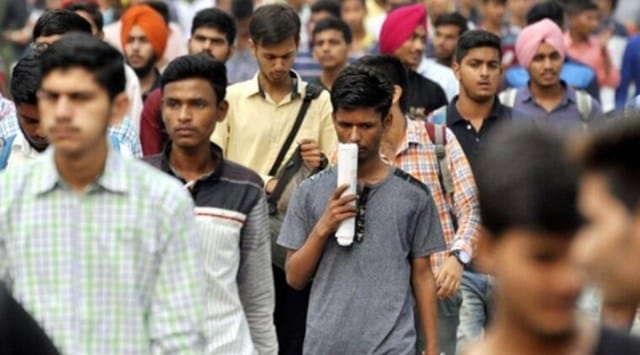Even as the overall unemployment rate reduced to 6.6 per cent in 2021-22 from 8.7 per cent in 2017-18, over 42 per cent of India’s graduates under 25 were unemployed in 2021-22, revealed the “State of Working India 2023” report by Azim Premji University’s Centre for Sustainable Employment released on Wednesday. With regards to women’s participation in the workforce, the report stated that after the coronavirus pandemic, 60 per cent of women were self-employed as compared to 50 per cent before the pandemic.
While this indicates an increase in women’s workforce participation, it was accompanied by a decline in self-employment earnings, which in 2022 were only 85 per cent of what they were in the first quarter of 2019 reflecting the impact of distress induced by the pandemic.

Also, there has been an upward trend in intergenerational mobility, but the trend has been weaker for workers belonging to Scheduled Castes and Scheduled Tribes categories as compared to workers belonging to general castes.
For unemployment based on education and age groups, the report stated that 42.3 per cent of graduates under 25 are unemployed whereas the figure stands at 21.4 per cent for those who have completed higher secondary education in the same age group. Notably, with lower educational qualifications, the rate of unemployment also decreased.
Speaking to The Indian Express, Rosa Abraham, co-author of the report and among the principal investigators for the India Working Survey, explained, “There are two things that are potentially happening here– one is of course that as a graduate your aspirations and ambition for the kind of work you want to do and the minimum wage you’d demand is much higher. So if the economy is not generating such jobs, they may choose to be unemployed.”
A second potential reason for this, according to Abraham, could be that those getting graduate-level education come from high-income households or with at least one parent with a good job. “For those kinds of young people, they have the luxury to stay unemployed. They don’t necessarily have to bring in money so which is why you see higher unemployment numbers for that category,” Abraham said.
With regards to intergenerational upward mobility, 75.6 per cent of SC/ST men in casual wage work also had sons involved in casual wage work in 2018. In comparison, the figure stood at 86.5 per cent in 2004, indicating that sons of casual wage workers belonging to SC/ST category have moved to other kinds of employment, most notably informal regular wage work.
Story continues below this ad
The drop in this figure is more significant for the general caste category, from 83.2 per cent in 2004 to 53 per cent in 2018. “One heartening thing to see is that between 2004 and 2018, there has been an upward mobility trend. This is great to see but another thing is that this kind of upward mobility is far truer for general castes. It is still there for SC/ST but to a smaller extent,” Abraham said.
On caste-wise participation in the workforce, the report observed that while the share of SC workers in casual wage work has reduced significantly between 1983 and 2021, the reduction has been more significant for general caste workers. For instance, in 2021, 40 per cent of SC workers were involved in casual employment as compared to 13 per cent of general caste workers. Furthermore, around 22 per cent of SC workers were regular wage workers as opposed to 32% of general caste workers.
According to the Periodic Labour Force Survey 2021-22, the unemployment rate in India stood at 4.1 per cent for that period. The State of Working India report used various data sources like surveys conducted by the National Statistical Office including Employment-Unemployment Surveys and Periodic Labour Force Surveys along with the India Working Survey, which is a collaborative project between researchers at Azim Premji University, IIM Bangalore, and University of Western Australia.
“The report looks at the nature of economic growth in India. One thing that stands out is that economic growth has not guaranteed employment. With every percentage increase in GDP, the capacity to generate jobs has systematically declined,” Abraham said. She added that even when there has been movement of the labour force out of agriculture, workers have not been able to move into salaried employment, a trend that was present before the pandemic as well.
Story continues below this ad
“What we do see at the global level, and especially in India, is that whatever salaried work is being generated has tended to be informal salaried work. You would think that salaried work should come with a contract and other benefits, but increasingly what we are seeing is that good salaried jobs are less and less prominent,” she said.

































